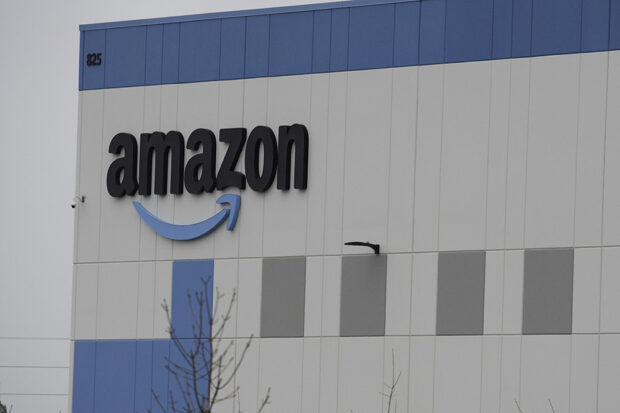
Two of the most obscenely rich men in the world, together with the German corporation Aldi, which owns more than 12,000 stores in 18 countries, have directly attacked the only agency charged with protecting U.S. workers’ right to organize.
There have been many recent successful union organizing campaigns despite all that unethical employers can do to try to coerce employees. Now, some of the worst anti-union employers—Amazon, Elon Musk and Trader Joe’s—are attempting to get rid of the National Labor Relations Board (NLRB), claiming that it is unconstitutional.
Amazon is accused of illegal interference with workers’ right to organize in several cases, but this filing against the NLRB came in a pending case accusing Amazon of illegally retaliating against workers at a warehouse in Staten Island, where employees voted to unionize in 2022. Amazon has recently faced more than 250 NLRB complaints alleging unlawful labor practices across the country.
In January, only one day after the NLRB determined that SpaceX, Musk’s company, illegally fired eight engineers for criticizing Musk, he filed a lawsuit against the NLRB. He tried to file it in Texas, although the company is located in California, but a judge in the Texas court moved it back to California.
The NLRB has both historical and current problems, but it has taken some actions to enforce the right of workers to organize. For example, an NLRB judge required Amazon to reinstate an employee illegally fired at a Staten Island site in April 2022, and an agency regional director approved a settlement with the company that required Amazon to rescind policies restricting worker organizers’ access to facilities where organizers could interact with coworkers.
A federal judge also granted an NLRB field office petition for Starbucks to reinstate seven fired workers engaged in protected organizing work in Memphis. Around the same time, another NLRB field office filed a complaint alleging that Starbucks unlawfully attempted to withhold pay raises from recently unionized workers.
The current attack on the NLRB’s constitutionality is a sort of multipronged fish hook, presumably hoping that something will catch. The arguments: that Board members and administrative law judges are impermissibly shielded from presidential removal, that Board adjudications violate the Seventh Amendment right to a jury trial, that the Board is a separation-of-powers violation as it combines judicial and executive functions, and that the Board presents a major-questions-doctrine problem. (The major-questions doctrine states that the courts must not interpret statutes by delegating major questions to agencies unless Congress clearly has said so.)
Even if these suits lose, they are meant to be a delaying tactic. It already takes unions more than 500 days on average to bargain a first contract even after overcoming the first hurdle of gaining recognition, and legal challenges to the NLRB are only likely to increase that delay.
This is not the first attack on the National Labor Relations Act (NLRA) or the NLRB.
In 1935, Congress passed the NLRA, stating that “it is the policy of the United States to encourage collective bargaining by protecting workers’ full freedom of association. The NLRA protects workplace democracy by providing employees at private-sector workplaces the fundamental right to seek better working conditions and designation of representation without fear of retaliation.”
Not all workers are covered under this fine-sounding language.
Agricultural workers and domestic workers were excluded from the NLRA as part of a compromise to get the votes of southern Democrats, universally white of course in an era when Black people were not allowed to vote. These Dixiecrats and their northern racist allies were concerned that if non-white workers had the right to unionize and organize and get higher wages, they might get some economic and political power.
(As a United Farm Workers veteran, I’ve been aware of the NLRB since I was in my teens, precisely because farmworkers are not covered. Cesar Chavez and the union attempted to turn this vulnerability into a strength: Although we were not covered, we were not prohibited from carrying out secondary boycotts. This worked, but only in the short term.)
The NLRB is an independent agency that oversees nearly all union elections at private workplaces in the United States. Congress established the NLRB to enforce the NLRA, which protects the right of some private-sector workers to organize into unions and bargain collectively over their terms and conditions of employment.
The Board has survived a Supreme Court challenge in 1937, as well as many attempts to attack the Board or its members including the House Committee on Un-American Activities’ accusations of communism. A House committee headed by an anti-labor Dixiecrat, Howard W. Smith, in 1940 proposed a bill to abolish the NLRB, which, although it was bottled up in committee, led to the Taft-Hartley Act of 1947, and seriously hindered the NLRB’s ability to enforce even the weakened labor law that remained.
Anti-labor—read Republican for the most part—legislators blocked presidential appointments to the NLRB, then sought court decisions, often successfully, claiming that the depleted Board had no power to make rulings.
In addition to the historical problems and exclusions, the NLRB has been deliberately underfunded and understaffed. There has been a decrease in funding since 2010, with a 30% decrease in staff since that date.
Currently, 71% of Americans approve of unions and about half of nonunion workers say they would join a union if they could. Yet the private-sector unionization rate is just 6.1%. That’s not because workers don’t want unions.
Instead of bargaining in good faith after successful union campaigns, many companies have done everything they could to avoid unionization, including illegal actions. U.S. labor law is weak, so there are many legal anti-union actions that companies can take. However, they have repeatedly committed illegal actions, hundreds of them.
Because companies have more money for legal representation and more power than the workers, these companies are not being held accountable. Instead, they are able to mount a challenge to already established labor law that is already almost 90 years old. They can undermine union campaigns by using months and months and years of delay, even though their actions are illegal.
The law says the workers are supposed to decide their representation. Money and power say that the companies are above the law. First these companies evade the law, then break the law and then try to get rid of the laws.
Help even the playing field. Make a contribution to a union: Amazon Labor Union, Starbucks Workers United, Trader Joe’s United and/or Tesla Workers United (affiliated with SEIU).

